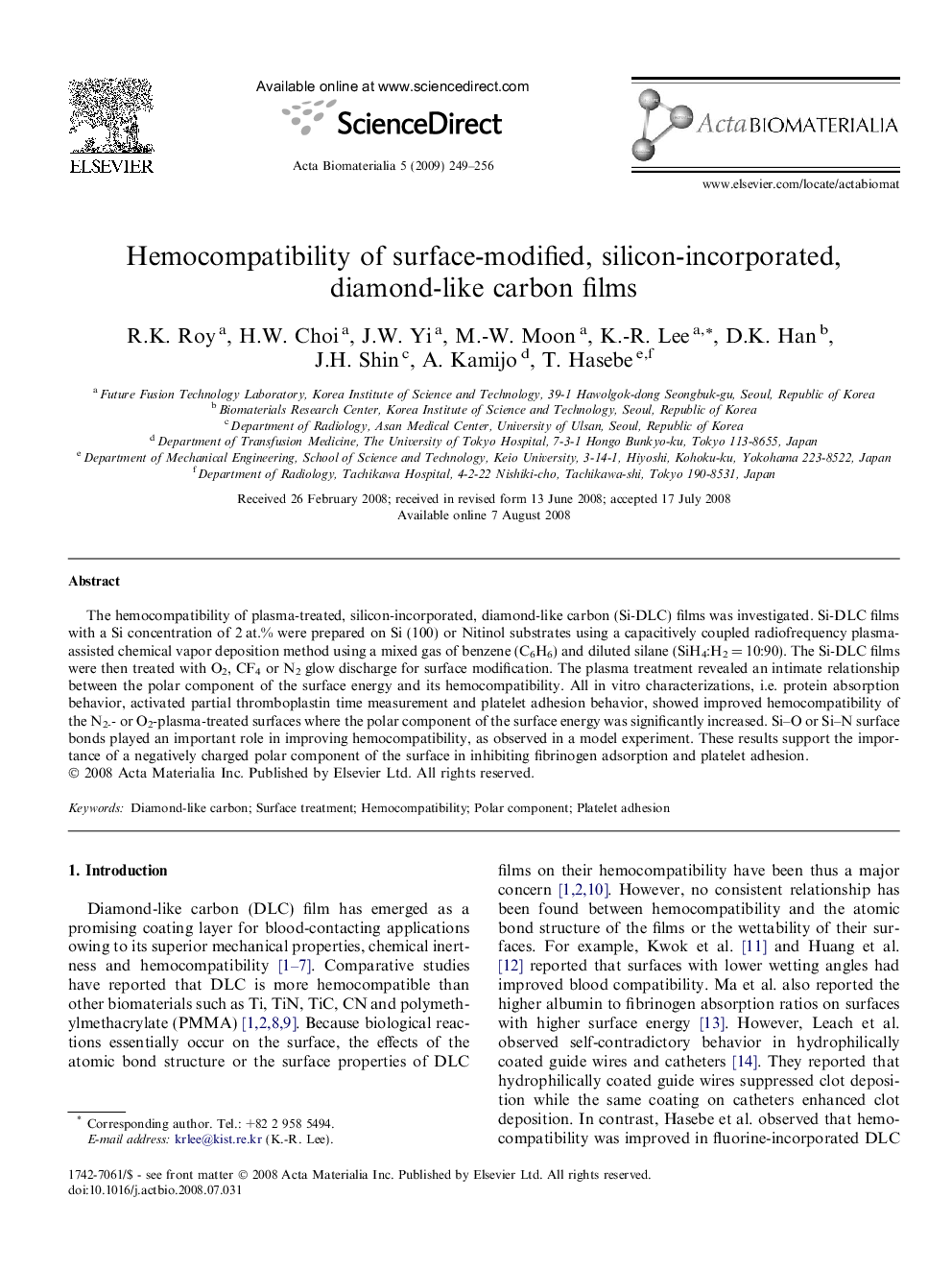| Article ID | Journal | Published Year | Pages | File Type |
|---|---|---|---|---|
| 2364 | Acta Biomaterialia | 2009 | 8 Pages |
The hemocompatibility of plasma-treated, silicon-incorporated, diamond-like carbon (Si-DLC) films was investigated. Si-DLC films with a Si concentration of 2 at.% were prepared on Si (100) or Nitinol substrates using a capacitively coupled radiofrequency plasma-assisted chemical vapor deposition method using a mixed gas of benzene (C6H6) and diluted silane (SiH4:H2 = 10:90). The Si-DLC films were then treated with O2, CF4 or N2 glow discharge for surface modification. The plasma treatment revealed an intimate relationship between the polar component of the surface energy and its hemocompatibility. All in vitro characterizations, i.e. protein absorption behavior, activated partial thromboplastin time measurement and platelet adhesion behavior, showed improved hemocompatibility of the N2-- or O2-plasma-treated surfaces where the polar component of the surface energy was significantly increased. Si–O or Si–N surface bonds played an important role in improving hemocompatibility, as observed in a model experiment. These results support the importance of a negatively charged polar component of the surface in inhibiting fibrinogen adsorption and platelet adhesion.
